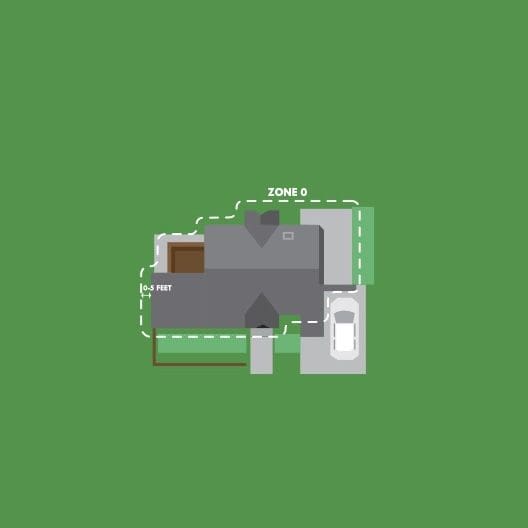Test Hero Goes Here
Click to view each tip. Click again to close.
Top 5 Action Items are Red
 1
1
Eliminate all combustible vegetation
Remove dead plants, dry grasses, brush, and flammable shrubs within five feet of the structure.
Remove combustible ground cover
Replace wood chips, bark mulch, and dry leaf litter with noncombustible materials like gravel, decomposed granite, or bare soil.
Keep the area clear of flammable items
Do not store firewood, cardboard boxes, plastic containers, outdoor furniture cushions, or trash bins in Zone 0.
Maintain a clean roof and gutters
Regularly clear leaves, pine needles, and debris from the roof and gutters to prevent ember accumulation.
Use fire-resistant plants only
If any vegetation remains in this zone, it should be low-growing, widely spaced, and fire-resistant (though ideally, Zone 0 remains plant-free).
Install ember- and flame-resistant vents
Replace standard attic and foundation vents with ones tested and rated for ember resistance, covered with 1/8-inch (or even 1/16th) corrosion-resistant metal mesh.
Harden exterior walls and siding
Use noncombustible or ignition-resistant materials (like stucco, fiber cement, or metal) for the home’s exterior within Zone 0.
Retrofit fences where they attach to the house
Replace the first five feet of wooden fencing where it connects to the home with noncombustible material like metal or masonry.
Seal gaps and cracks
Close openings in siding, eaves, or around windows and doors where embers can enter or lodge.
Avoid overhangs or open decks with exposed joists
Either enclose open eaves and decks with ignition-resistant materials or ensure nothing flammable is stored underneath.

